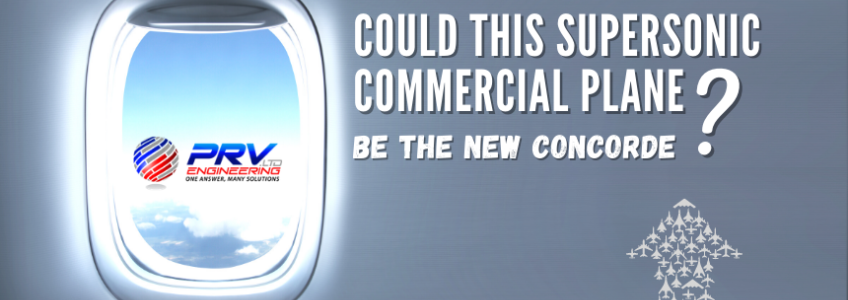There hasn’t been much to celebrate in the aviation sector since the pandemic grounded flights across the world, almost bringing it to a standstill. However, there is something to look forward to in a post-Covid world and that is supersonic passenger aircraft.
Since the permanent departure of the Concorde almost two decades ago, not much has transpired in the development of supersonic passenger aircraft but Boom Supersonic has other ideas. Thanks to incredible technological advances and the travel boom of recent years, we could soon see a brand new supersonic commercial airliner take to the skies.
Advanced Aviation Technology And Engineering
The Concorde, in all its glory, had two fatal flaws – exorbitant operational costs and extreme noise levels from the afterburners used to break through the high-drag sonic barrier. Thankfully, the aviation and aerospace engineering sector has seen some incredible advancements since 2003, including advanced propulsion systems.
A key differentiator in terms of technology between the Overture and the Concorde is much more efficient afterburners. As a result of 50 years in research and developing better propulsion designs, Boom’s Overture will be able to perform all phases of flight without needing afterburners. This means it will be more eco-friendly, efficient and reliable.
To ensure the future supersonic passenger aircraft complies with restrictions and the carbon emissions standards, Boom Supersonic announced a partnership with Rolls-Royce announced last year. The goal is to maximize the Overture’s fuel efficiency so the aircraft can utilize sustainable aviation fuels and minimize noise.
Developing The Overture Supersonic Passenger Aircraft
At the heart of testing and perfecting this technology is the Boom X-B1 aircraft. This 21.6 m (71 ft) plane is a scaled-down version of the Overture that will reach speeds of Mach 1.3 powered by triple J85-15 engines from General Electric.
Durrence claimed that they’ve been advancing Overture’s conceptual design throughout the XB-1 program and future test flights will help further R&D. They are already several years ahead on the development and when XB-1 flies later this year, they will finalize the Overture’s design.
Boom Supersonic might be the closest in delivering on the promise of a new commercial supersonic aircraft but they aren’t the only ones. NASA has already developed an experimental supersonic jet (X-59) whilst Aerion Supersonic is working with Boeing on developing a sustainable supersonic business jet.
Recommended: ‘NASA’s Supersonic Jet Without The Boom’
Can Supersonic Passenger Aircraft Work?
It seems a legitimate question as we may be worlds apart from the Concorde era but is there a big enough demand? Simply put, people want to shorten travel times and don’t seem to mind paying higher prices, despite the pandemic.
More findings from a 2020 UBS report states that consumers are willing to pay significant premiums over business class prices. This is great news for the aviation sector as it indicates a stronger market potential for supersonic passenger aircraft.
With the French and British governments designing the Concorde to push the limits of technology, they didn’t focus on profit at that time. However, it’s different from the Overture as they are significantly reducing operational costs which mean airline companies will have a positive impact on travellers.
“Overture will reduce operating costs enough to turn a profit at business-class fares that the market already supports,” Durrence explains.
Final Thoughts
The Overture will be able to maintain speeds of Mach 2.2 (similar to the Concorde’s speed) which means it can travel from New York to London in approximately three hours. Boom Supersonic confirmed that tests are set to begin this year with the results acting as a guide for any improvements or alterations.
“Since the Concorde stopped flying in 2003, air travel has more than doubled from 1.6 billion to over 4 billion passengers per year, indicating the market is there for supersonic travel,” said Brian Durrence, Senior Vice President at Boom Supersonic.
The first Overture aircraft should roll out in 2025 and begin flight tests in 2026. Boom expects its new supersonic passenger aircraft to begin commercial service as early as 2029.
PRV Engineering specialises in several industries including automotive, aerospace, defence, construction and rail among others. For more info about our products and service, please visit the website.


Recent Comments